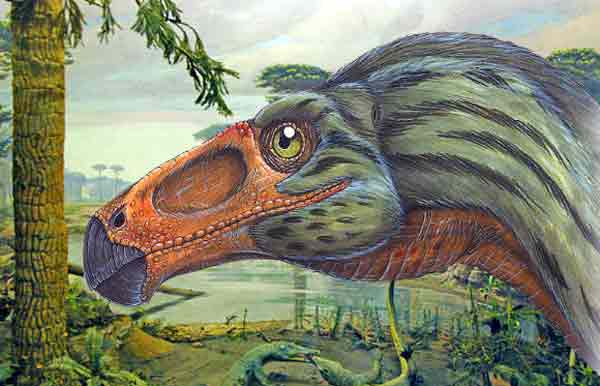
US (BBN)-The researchers successfully replicated ancestral molecular development to transform chicken embryos in a laboratory into specimens with a snout and palate configuration similar to that of small dinosaurs such as Velociraptor and Archaeopteryx.
Our goal here was to understand the molecular underpinnings of an important evolutionary transition, not to create a ‘dino-chicken’ simply for the sake of it,” said team member Bhart-Anjan Bhullar of Yale University, who is the lead author on the study published in the journal Evolution, reports Sci-news.com.
Prof Abzhanov, Bhullar and their colleagues developed a new approach to finding the molecular mechanism involved in creating the skeleton of the avian beak.
The beak is a crucial part of the avian feeding apparatus, and is the component of the avian skeleton that has perhaps diversified most extensively and most radically,” Bhullar said.
First, the scientists conducted a quantitative analysis of the anatomy of related fossils and extant animals to generate a hypothesis about the transition.
Next, they searched for possible shifts in gene expression that correlated with the transition.
They looked at gene expression in the embryos of emus, alligators, lizards, and turtles, and discovered that both major living lineages of birds differ from the major lineages of non-bird reptiles and from mammals in having a unique, median gene expression zone of two different facial development genes early in embryonic development.
This median gene expression had previously only been observed in chickens.
Using small-molecule inhibitors to eliminate the activity of the proteins produced by the bird-specific, median signaling zone in chicken embryos, they were able to induce the ancestral molecular activity and the ancestral anatomy.
Not only did the beak structure revert, but the process also caused the palatine bone on the roof of the mouth to go back to its ancestral state.
This was unexpected and demonstrates the way in which a single, simple developmental mechanism can have wide-ranging and unexpected effects,” Bhullar said.
The work took Bhullar from the alligator nests at Rockefeller Wildlife Refuge in southern Louisiana to an emu farm in Massachusetts.
He extracted DNA from various species in order to clone fragments of genetic material to look for specific gene expression.
The research has several implications. For example, if a single molecular mechanism was responsible for this transformation, there should be a corresponding, linked transformation in the fossil record.”
This is borne out by the fact that Hesperornis, which is a near relative of modern birds that still retains teeth and the most primitive stem avian with a modernized beak in the form of fused, elongate premaxillae, also possesses a modern bird palatine bone,” Bhullar said.